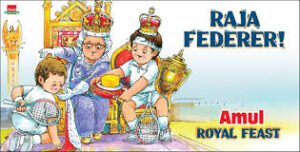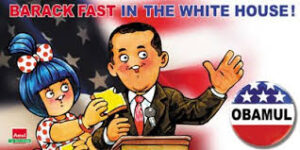Brand of Humour
There has been a lot of talk in recent times about humour and the boundaries within which it needs to operate, assuming that we accept that boundaries need to exist. Wit, mockery, satire, slapstick, light hearted, playful, banter, provocative, insulting, shocking there is a host of sub genres that can be found if you start peeling the layers.
Brands have, for as long as advertising and communication have existed, relied on humour to get their message across. Of course, with varying degree of success. We have in a previous post discussed that communication with an emotional appeal tends to fare better. Humour in that sense is a more broad based emotion than love (of any kind). Hence, has been used for a broader set of products & brands.
So is success guaranteed if the communication has humour? Does success of communication necessarily translate into sales or business success?
With all due credit to the various studies that have been carried out don’t seem to provide any conclusive evidence. Therefore, No and Can’t Say, would be the most honest responses to the questions above. How then do we assess or plan for it? In some form or the other the answer would lie on a graph with relevance and recall as the axes.
While the above would give an indication of the effectiveness the aspect that relative control may be exercised is relevance. The down side. It is subjective. The extent of humour, the subject, the delivery all are but a judgement call made by a select few that run the brand. There are several different ways in which humour can be used:• Positioning the brand as one with a light hearted view of the world. Humour and playfulness therefore becomes a key element of the brand’s personality.
• Presentation: This may be a campaign specific choice where in a brand opts for humour as a means of delivering a message. Relevance would again be something to watch out for. Some brands are able to hit the nail on the consistently, some struggle, whilst others just do not get it!
• Association: Depending upon who the brand’s audience is, a brand may choose to associate with properties that are humour based. Again, as with any other association relevance and fit with the overall brand is important.
http://www.youtube.com/watch?v=A9nCPQ2_FlQ
Given the myriad media choices available and the fact that in this day and age consumers are a part of the brand definition humour is a tight rope to walk too. Brands that choose this path have to walk to a consistent rhythm and in a social 24×7 context live upto the personality especially brands interacting on a constant basis in the sociosphere.
The good part is the sociosphere offers feedback as a brand you can gauge whether you are flat or tickling rib or stirring intellect.
While new highs are being achieved with regard to what can be said or done in the name of humour there are new lows that are being set too, Charlie Hebdo and the AIB Knockout closer home are cases in point where humour did not go down well with some. It doesn’t need to either. Needless to say any freedom needs to be exercised responsibly.The Last Laugh
 It takes something special to laugh at yourself. To do that not just in front of a mirror but it full public view, you need to have tremendous confidence in your ability.
It takes something special to laugh at yourself. To do that not just in front of a mirror but it full public view, you need to have tremendous confidence in your ability.We would have often seen brands employ humour in their communication. There are certain brands which are known not to take themselves seriously, they are about having fun and they do it unabashedly. Then there are brand that mock their competition. But very seldom have brands mocked themselves.
We have often talked about individuals as brands and in a celeb obsessed country like India we have quite a few. But the masses are fickle they can put you on top or grind you to the ground.
This article is inspired by two examples where the protagonists had the courage to do it. Yes the communication has not been initiated by them but the fact that they chose to be a part of it speaks volumes. They took the risk of facing ridicule. One is an example of someone who has done it at the very start of their career, the other one at the ebb.
Alia Bhatt
Sourav Ganguly
http://www.youtube.com/watch?v=xFkJNlvtqYs
Like I mentioned to laugh at yourself needs confidence in one’s own ability. A confidence that comes from not only understanding the strengths but also the weaknesses. It requires resilience.
And what is it not?
Laughing at one self is not just demonstrated by the ability to take things in the lighter vein. It definitely is not about clowning around.
It’s about taking the bull by the horns. It’s about putting yourself out there to be judged with all your defects and inadequacies in the open. The risk is great but the rewards are far greater.
Can brands take a leaf out of this book and do the same? Can they take a weakness and convert it into a strength? Laugh or ridicule themselves openly and then comeback even stronger? Can they have the last laugh?
Well as they say, “Nothing ventured noting gained!”



